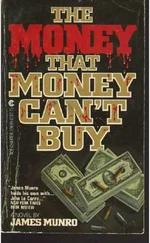It’s as though he’s suddenly discovered a new meaning of the phrase cost of living. Where else has he seen the species priced in this way? Maybe in films … slaves in films about Rome, who are bought and sold in town squares for a handful of crude, poorly made coins, or for a few little gilded discs masquerading as coins, which a greedy hand shakes in a bag to make their obscenity ring out like a tambourine. And prostitutes, of course, who are at once so archaic and so auratic, although with them it’s never clear whether the price is for the prostitute herself or the package of services she offers. But that’s cinema, and he knows all too well how distrustful he must be of anything that impresses him. And besides, with both cases — the slaves under the whip, the women offering their flesh on the street — there’s always the same pathos and emotional agitation, a truly cancerous form of extortion that makes it virtually impossible to understand anything. The policy is ruthless in that regard. It doesn’t soften emotion, it destroys it. One life equals a hundred thousand dollars. Period. Where else has he seen the orders of the flesh and of money converge like this, with such impassive matter-of-factness? Suddenly, the dead man’s voice comes back to him from some distant Sunday lunch, speaking with a terrified tremor. He doesn’t see him straight away, something that happens to him often with certain memories: they come back to him lacking a component, such as images, or sounds, or smells, or any of the resonance of the experience, as though someone’s intercepted them on their way from the archive to him. But against this momentarily black canvas, he hears his voice repeating a number over and over again in a falsetto, four million, the amount that the armed organization that has kidnapped the iron-and-steel company’s general manager is demanding by way of ransom, until the picture grows clearer and the dead man appears, utterly beside himself, his whole face bloodshot, gesticulating in his shirtsleeves at a table spread with food that’s growing cold, and then taking advantage of the general stupor into which the guests have fallen to stretch out a hand and snatch a crostini. Yes, these numbers tell him something. Much more, in any case, than the phrase cost of living in its most common sense, the one everyone uses it in because the price of every single thing and good and service changes from one day to the next, though the crucial question is never answered: why the phrase applies to fluctuations in the price of milk or clothing and not in the price of a captain of the refrigeration industry or an executive at a multinational company.
It’s like a fever. Every week the front pages of the papers announce a new record. Four million for the general manager of the iron-and-steel company, a case the dead man knows well, partly because it concerns the corporation he works for, but more because, as he himself says, it hits very close to home, and proves what the discovery of his body at the bottom of the San Antonio River spells out in black and white: how close he is to being next. But there’s also the twenty million that the Fuerzas Armadas Revolucionarias demand for Roggio in Córdoba, the five million for the metalworker Barella, the two million three hundred that the Ejército Revolucionario del Pueblo gets out of Lockwood, the million for John Thompson from Firestone, the twelve million Esso pays for Victor Samuelson after five months in captivity. And so on, up to the zenith, the blow to end all blows, the ne plus ultra of the flesh — money tariff system, which manages to contain a whole cycle of inflation within itself: the five million that the Montoneros demand when they kidnap the Born brothers in September 1975, and the forty or sixty million — reports vary — that the grain processor Bunge y Born ends up paying out in April 1976, when the executives are finally freed. He follows the dramatic twists in these operations delightedly, as enthusiastically as many of his friends — generally the ones who make fun of him or walk out on him whenever he suggests going to the Communist cinema to see an Eastern European film cycle — follow the local soccer tournament, and is never more jubilant than when the captives regain their freedom and appear, exhausted but happy, on the front pages and in TV news bulletins, surrounded by a cordon of police and cameras. It’s not their liberation that moves him, exactly. Neither is it the fact, repeated right and left in the bourgeois press, that with their freedom the prisoners regain the most vital element of life and therefore life itself, which during their captivity in those so-called people’s prisons had been reduced to sleeping, pissing, shitting, chewing on some repulsive gruel, walking in circles around tiny rooms, half-hearing their neighbors’ radios, and being interrogated. He’s not interested in the humiliating miseries of their survival. After all, don’t the companies of which these captives are the brains, the figureheads, the proud spokesmen condemn their thousands upon thousands of workers to live precisely the same life, a life that’s almost sub -life, that all but falls below the minimum threshold of life? And not for the two weeks or three months that they themselves are forced to live it, but for years, whole decades, a whole lifetime, so that for them it’s not some perverse substitute for life but life itself, the only one they have, and so the one that, pitiful and foul and inescapable as it may be, demands to be celebrated. No, what delights him, splashed as flagrantly on the newspapers’ front pages as the layers of makeup on actors’ faces in photos stuck to theater doors, is the transformation that has taken place in the captives. There they are, driving around in the latest cars, flashing tailor-made suits and Italian shoes and signing checks with gold fountain pens, when a perfectly timed commando operation uproots them from their lavish lifestyle. Days, weeks, months later, when they’re released and brought before those dazzling flashes, they’ve turned gray, their scalps have been eaten away by lice, they haven’t shaved for weeks, their skin is chafed. They’re dirty, they’ve grown thin, you can see the bones in their faces. They look as defeated as condemned men, and have the glassy-eyed, evasive air of alcoholics, the heavily medicated, victims of abuse. They wear poor-quality sports clothes, outfits improvised from the garments given to them by their captors, all of them mismatched — the shirt untucked, shoes with no laces, nicotine stains on their fingers (those that smoked before being kidnapped carry on puffing like chimneys, and those that didn’t adopt the habit with a deadly thirst); their fingernails are broken and dirty, the fingernails of people who’ve spent every day digging in the vain search for an escape. They’re disoriented, they have trouble remembering, they stammer. They look like wild animals or the mentally retarded.
But to him — whose closest encounter with the department of kidnapping and extortion and everything that moves in its orbit (executives at monster corporations, commando units, rifles, people’s prisons, hoods, ransoms, fake military uniforms) is the figure four million, as yelled by the dead crostini lover in the grip of a wave of terror, and of course the dead crostini lover himself, whom he sees for the last time one summer lunchtime in Mar del Plata, ranting and raving about the garish orange they’ve painted the chairs at the beach club while filling his mouth with crostini, and then, from one minute to the next, in a dark suit and makeup, squeezed by the narrow walls of a coffin — to him the physical and mental deterioration, the loss of energy, and the premature ageing that abductees undergo while they’re being held, and which the newspapers feature ecstatically on their front pages, seems to have less to do with the conditions of their captivity, no matter how harsh they are, than with the monetary demand that’s imposed on them. The difference between a showy executive soon after his abduction, while he’s still in full possession of his faculties, and the same executive when he’s released days, weeks, or months later, is monetary. It’s the money he’s missing, that’s been stolen from him; it’s the cash flow — because these armed organizations are in his father’s camp: they only believe in cash — that’s been drained, taking with it all his proteins, nutrients, plasma, red blood cells: all of the basic elements whose evident depletion the police doctors note with alarm when they examine the abductees immediately after their release. He even pictures the whole process in a kind of neat mental cartoon, drawn in that already slightly outdated style — king-size Havana cigars lit with hundred-dollar bills, bulging bellies filled with glassfuls of shrimp cocktail, wristwatches shining like gold ingots — that the radical press often uses to satirize capitalists and their lackeys: the abductee, with his Montecristo still between his fingers, growing thin and fading away in a rickety old bed while a tube that’s full to bursting extracts money and blood at once from the same vein.
Читать дальше












